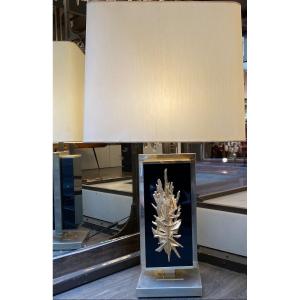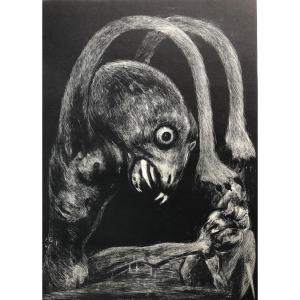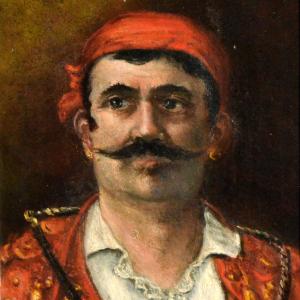Othon Friesz Dated 1923
Montparnasse frame
Dimensions of the frame: 88 cm x 76 cm
Henri (Emile Othon) Friesz was born in Le Havre in 1879. He took evening classes at the School of Fine Arts in his city from the age of thirteen. There he meets Raoul Dufy who becomes his friend and Georges Braque. In 1898, Othon Friesz obtained a scholarship which enabled him to study at the Ecole des Beaux-Arts in Paris until 1903 (Bonnat's studio). He binds with Matisse, Rouault, Marquet, Vlaminck, Derain. He then painted landscapes in the tradition of Impressionism, inspired by Pissarro and Guillaumin. He then exhibited in collective exhibitions (Salon des Indépendants, Salon d'Automne). His first personal exhibition was organized in Paris in 1904. Othon Friesz joined the fauve movement at the end of 1905. He simplified and synthesized his forms and painted canvases in pure and clear colors (ports, portraits, landscapes of the south of France). Around 1909, Friesz came to a more classical "manner" which remained his until the end of his work. In 1912, the artist opened a studio in Paris where he taught painting, interrupted by the war, this activity resumed in 1919. In 1913, he participated in the Armory Show in New York. Mobilized in 1914, he was injured the following year and was assigned to Paris in the technical services of Aeronautics; he will be on this occasion at the origin of a documentary museum of Aviation. Out of his usual way, he painted, in 1915, a series of expressive canvases inspired by the war. Throughout the interwar period, Friesz continued to explore, in his classical style, the themes that were dear to him: nudes, landscapes, female figures, still lifes, bouquets of flowers, portraits. From 1911 to 1938, Friesz traveled successively to Portugal, Belgium, Italy and the United States. In 1941, like Derain, Othon Friesz participated in the trip of French artists to Nazi Germany. The artist will produce cartoons for the tapestry and murals. Othon Friesz died in Paris in 1949.































 Le Magazine de PROANTIC
Le Magazine de PROANTIC TRÉSORS Magazine
TRÉSORS Magazine Rivista Artiquariato
Rivista Artiquariato